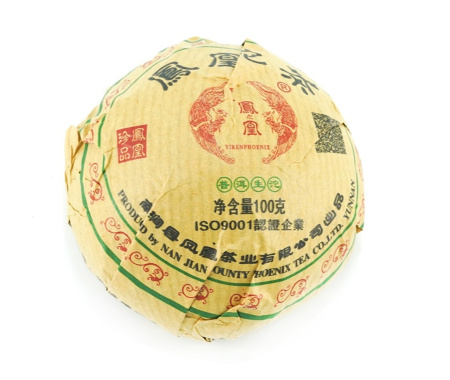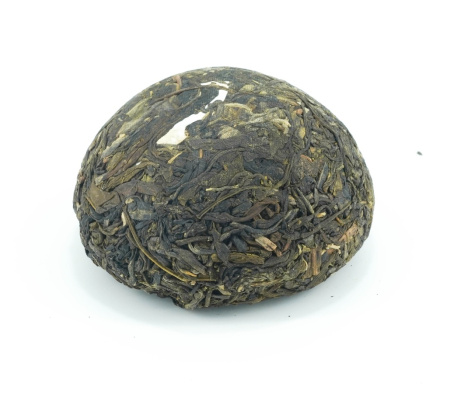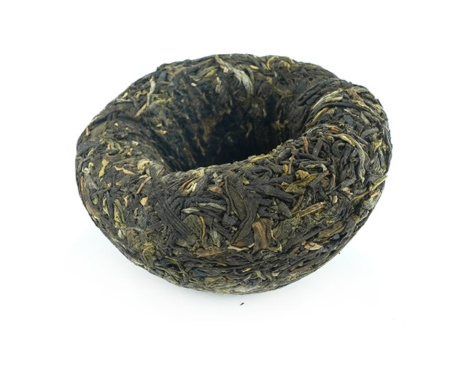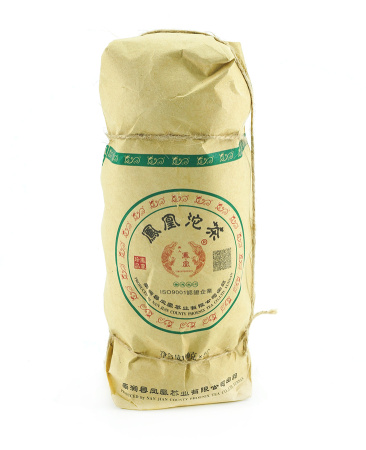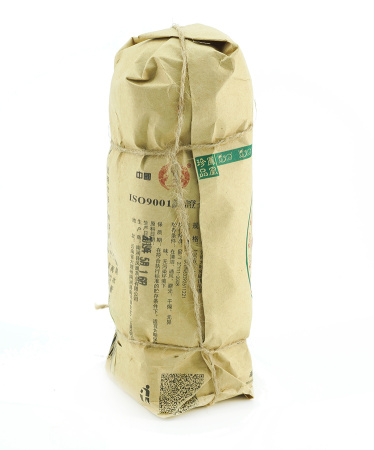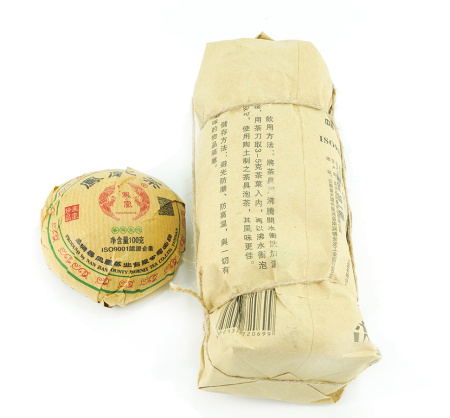-
9 Saturation
-
9 Aftertaste
-
9 Aroma
-
9 Effect
-
9 Balance
-
9 Body
Шэн пуэр "Феникс точа" 2020 от Цицай Фэнхуан: молодой и требовательный
Этот шэн пуэр (生普洱, Shēng pǔ'ěr) представляет собой точу (沱茶,Tuóchá - гнездо) весом 100 грамм, произведенную в 2020 году заводом Цицай Фэнхуан (云南西双版纳勐海县七彩凤凰茶厂, Yúnnán xīshuāngbǎnnà měng hǎi xiàn qīcǎi fènghuáng chá chǎng), расположенным в сердце пуэрного региона – уезде Мэнхай, Сишуанбаньна, провинция Юньнань. Название на обертке – "Фэнхуан пуэр точа" (凤凰普洱沱茶, Fènghuáng pǔ'ěr tuóchá) переводится как "Феникс пуэр точа".
Производитель: Цицай Фэнхуан из Мэнхая
"Семицветный Феникс" (Цицай Фэнхуан) – один из многочисленных чайных заводов в Мэнхае, центре производства пуэра. Выпуск шэн пуэра в классическом формате точи урожая 2020 года представляет интерес для любителей этого вида чая.
Форма точи – это классика для пуэра. Прессовка данного чая плотная, требующая использования шила или ножа для пуэра, чтобы отделить порцию для заваривания. При этом лист внутри сохраняет структуру и не крошится в пыль при разламывании.
Винтаж 2020: молодой шэн со своим характером
Чай произведен и спрессован в 2020 году, что означает, что на данный момент ему около 4.5-5 лет. Для шэн пуэра это все еще достаточно молодой возраст. Но, несмотря на молодость, чай может быть интересен любителям хороших шэнов, но его юность проявляется в характере и требует особого подхода к завариванию.
Аромат: дым, чернослив и лес
Аромат этого шэна характерный и довольно брутальный: присутствуют ноты дымка, чернослива. Общая характеристика – "мужской, суровый, лесной". Этот профиль вызывает ассоциации с природой, походами, отдыхом у реки.
Вкус и заваривание: в поисках баланса
- Сложность заваривания: Для удачной заварки предпочтительнее использовать гайвань, а не чайник.
- Концентрация: Рекомендуется использовать меньшую концентрацию заварки, чем для шу пуэра – примерно 3-3.5 грамма на 180 мл. Такая пропорция помогает избежать излишней терпкой молодости, которая может быть неприятна в молодых шэнах.
- Скорость проливов: Критически важны очень быстрые проливы без задержки ("залил - слил"). Если чай передержать, он дает сильную вяжущую терпкость ("во рту хурма").
- Раскрытие и стойкость: Чай начинает раскрываться с третьего пролива, но выдерживает не очень много - порядка шести заварок, после чего идет на спад.
- Качество воды: Важно использовать хорошую воду (родниковую или бутилированной типа "Байкальской"), так как водопроводная вода может негативно сказаться на вкусе.
Общее впечатление
Этот шэн пуэр 2020 года от Цицай Фэнхуан – чай с характером. Он не для новичков, а скорее для опытных любителей шэнов, готовых экспериментировать с завариванием, чтобы найти к нему подход. Его суровый, дымно-черносливовый профиль и требовательность к параметрам заваривания могут отпугнуть одних, но заинтересовать других, ищущих мощный, "лесной" чай.
Феникс точа 2020 года – это представитель молодого, плотно спрессованного шэн пуэра из Мэнхая. Его сильный, слегка дымный и грубоватый характер требует умелого обращения при заваривании проливами или может быть по-своему интересен при варке. Этот чай предлагает познакомиться с энергией молодого шэна и оценить его потенциал для дальнейшего развития или насладиться его нынешней силой при правильном подходе.
|
Name in Chinese
|
凤凰普洱沱茶 |
|
Pinyin
|
fènghuáng pǔěr tuóchá |
|
Translation
|
puer nest phoenix |
|
Country
|
China |
|
District
|
Xishuangbanna Dai Autonomous Prefecture |
|
Provinces
|
Yunnan (云南) |
|
Manufacturer
|
Цицай Фэнхуан (云南西双版纳勐海县七彩凤凰茶厂) |
|
Raw material production date
|
2020 |
|
Year of pressing
|
2020 |
|
Pressing form
|
Tuo Cha (Tuo Tea) |
- Reviews
- Vkontakte





